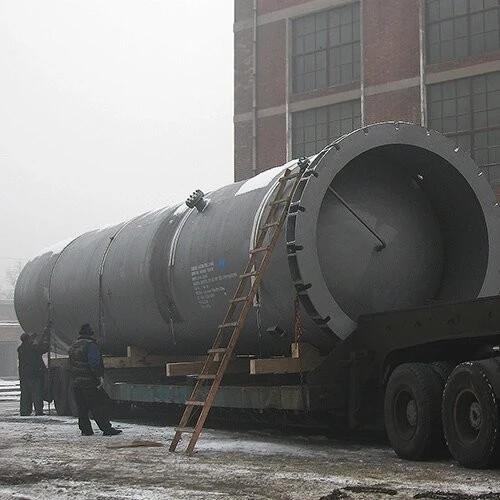Pressure Vessel Failure Modes: Design and Risk Insights

The occurrence of pressure vessel failure signifies a critical state wherein damage has reached a level where the strength, rigidity, or functional capacity of the vessel can no longer meet the stipulated usage requirements. The unraveling of the factors contributing to this failure involves understanding it as a gradual process influenced by external forces, such as mechanical stress, environmental conditions, and thermal effects. The manifestation of damage is characterized by the degradation of material properties, structural discontinuity, or a decline in the vessel's load-bearing capacity.
The cornerstone of pressure vessel design lies in comprehending its failure mode, necessitating that design methodologies align precisely with this mode. The initial stages of pressure vessel design involve a meticulous examination to identify potential failure modes. Notably, for Class III pressure vessels, the design process extends to the issuance of risk assessment reports, encompassing major failure modes and corresponding risk control measures. Furthermore, the evaluation of pressure vessel inspection results hinges on the identification of these failure modes.
1. Short-term Failure Modes
Brittle Fracture: This occurs when the stress in the vessel wall is significantly less than the material's strength limit, primarily attributed to material embrittlement or inherent defects.
Ductile Rupture: Typically observed in carbon steel pressure vessels, this failure mode is a consequence of inadequate wall thickness, excessive internal pressure, or improper material selection.
Leakage at Joints: Excessive deformations can lead to the failure of the sealing surface or nozzle, potentially resulting in combustion, explosion, or poisoning incidents and severe environmental pollution.
Crack Formation or Ductile Tearing: A result of localized strains exceeding permissible limits, leading to the formation of cracks or ductile tearing.
Instability (Elastic, Plastic, or Elastic-Plastic): Elastic instability, occurring under compressive stress, involves the sudden loss of the original regular geometry of the pressure vessel. Elastic deflection is not proportional to the load in this scenario, and critical pressure is mainly dependent on the vessel's size and the material's elastic properties. However, when the stress level surpasses the material's yield point, inelastic instability occurs, and the critical pressure becomes linked to the material's strength.
Ductile Rupture: Typically observed in carbon steel pressure vessels, this failure mode is a consequence of inadequate wall thickness, excessive internal pressure, or improper material selection.
Leakage at Joints: Excessive deformations can lead to the failure of the sealing surface or nozzle, potentially resulting in combustion, explosion, or poisoning incidents and severe environmental pollution.
Crack Formation or Ductile Tearing: A result of localized strains exceeding permissible limits, leading to the formation of cracks or ductile tearing.
Instability (Elastic, Plastic, or Elastic-Plastic): Elastic instability, occurring under compressive stress, involves the sudden loss of the original regular geometry of the pressure vessel. Elastic deflection is not proportional to the load in this scenario, and critical pressure is mainly dependent on the vessel's size and the material's elastic properties. However, when the stress level surpasses the material's yield point, inelastic instability occurs, and the critical pressure becomes linked to the material's strength.
2. Long-term Failure Modes
Creep Rupture: A result of prolonged loading at high temperatures, causing slow plastic deformation and eventual fracture due to significant thickness reduction.
Creep-Excessive Deformations: Mechanical joints may undergo excessive deformations, or there may be an unacceptable transfer of load due to creep.
Creep Instability: Gradual accumulation of creep deformation, eventually leading to instability.
Erosion, Corrosion: Material degradation due to the corrosive action of mediums, especially relevant in carbon steel tanks. Uniform corrosion, pitting corrosion, intergranular corrosion, stress corrosion, crevice corrosion, hydrogen corrosion, and bimetallic corrosion are among the corrosion forms.
Environmentally Assisted Cracking: This includes stress corrosion cracking, hydrogen-induced cracking, and other forms of cracking influenced by environmental factors.
Creep-Excessive Deformations: Mechanical joints may undergo excessive deformations, or there may be an unacceptable transfer of load due to creep.
Creep Instability: Gradual accumulation of creep deformation, eventually leading to instability.
Erosion, Corrosion: Material degradation due to the corrosive action of mediums, especially relevant in carbon steel tanks. Uniform corrosion, pitting corrosion, intergranular corrosion, stress corrosion, crevice corrosion, hydrogen corrosion, and bimetallic corrosion are among the corrosion forms.
Environmentally Assisted Cracking: This includes stress corrosion cracking, hydrogen-induced cracking, and other forms of cracking influenced by environmental factors.
3. Cyclic Failure Modes
Progressive Plastic Deformation: Continuous plastic deformation over time.
Alternating Plasticity: Repeated cycles of plastic deformation.
Fatigue (Medium and High Cycle): Fatigue occurring under elastic strains or elastic-plastic strains.
Environmentally Assisted Fatigue: Fatigue influenced by external factors, requiring consideration of environmental conditions in the assessment of fatigue failure.
Alternating Plasticity: Repeated cycles of plastic deformation.
Fatigue (Medium and High Cycle): Fatigue occurring under elastic strains or elastic-plastic strains.
Environmentally Assisted Fatigue: Fatigue influenced by external factors, requiring consideration of environmental conditions in the assessment of fatigue failure.
In summary, comprehending pressure vessel failure modes is crucial for effective design and maintenance. Short-term failures highlight the importance of material selection and proper design, while long-term failures underscore the need for ongoing monitoring. Cyclic failures emphasize the significance of managing stress cycles for sustained integrity. Identifying failure modes guides design and risk assessment, ensuring proactive safety measures. Continuous learning enhances the industry's resilience, promoting the longevity and reliability of pressure vessels in critical applications.

